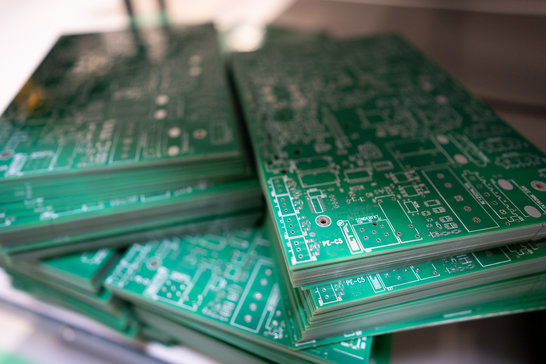Technology
Underestimated printed circuit board
The core component of every embedded system is the printed circuit board. A supposedly boring circuit board has many tasks. Read here to find out what they are.

Core component
Printed circuit boards for embedded systems
The core component of every embedded system is the printed circuit board. A supposedly boring circuit board has many tasks. Printed circuit boards are primarily carriers for electronic components. Printed circuit boards are used for mechanical fastening of the components and for electrical connection of the component terminals. Modern printed circuit boards consist of several layers of conductive material for making electrical connections. These connection layers are separated from each other by layers of insulating material. Connections between conductive tracks on different layers are realized by means of vias. The electronic components are assembled on the top and/or bottom of the PCB and soldered to the conductive pads.
In the meantime, there are also PCBs on the market that make it possible to embed components in the PCB (embedded PCB) and not just apply them to the top or bottom side. Resistors, capacitors and more are part of the PCB.

The properties of a printed circuit board must be taken into account in the development of electronic devices. Layout and design of the PCB have a great influence on the electromagnetic radiation and immunity behavior. In the case of electronic assemblies with high-frequency signals, PCB material and conductor routing must be taken into account in the calculation and simulation of the circuit. A printed circuit board itself has electrical properties, determined by materials and conductor track routing. This is referred to as impedance-controlled design. The PCB manufacturer may only use the specified materials, otherwise the electrical properties would change and the circuit could no longer function stably.
In modern embedded systems with wireless data transmission, antennas are also implemented directly with the PCB. This is known from meandering conductor paths, which are designed depending on the wavelength and the desired radiation characteristic.

Challenging & exciting task
In modern embedded systems with wireless data transmission, antennas are also implemented directly with the circuit board. This is known from meandering conductor paths, which are designed depending on the wavelength and the desired radiation characteristics. High density PCBs are available with several dozen interconnect layers to meet the high packing density of modern miniaturized devices. PCBs can be rigid or flexible, exploiting the third dimension to fit into a device design. And last but not least, the metal layers of the PCB also perform important functions in heat dissipation. PCB design is therefore by no means boring, but a challenging, multidisciplinary task for experienced embedded developers.
